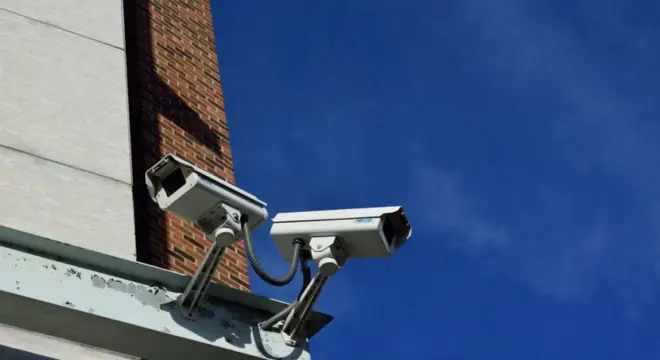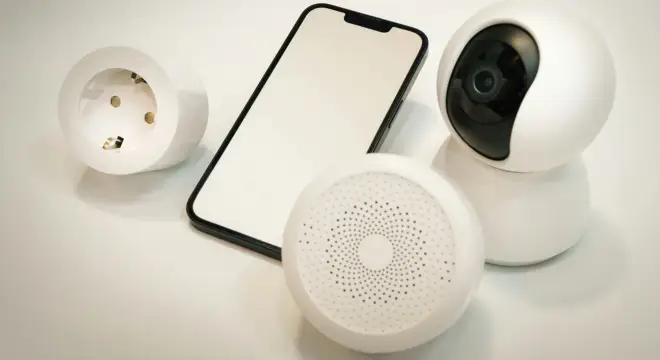Comprehensive Guide to Choosing the Best Home Security Solutions in 2024?
Is your home ready for all the challenges and advancements that 2024 will bring? Home security today is more than simple locks and alarms. It’s all about using advanced technology, tackling demanding security needs, and coming up with solutions that work well and in a budget.
Be it professional monitoring, DIY setups, or utilizing smart devices, such as Alexa and the Google Assistant, it is easier than ever to find what you need.
This guide should cover everything there is to know about home security in 2024-the monitoring options through which key factors like ease of installation and price would be elaborated through typical comparisons of the best systems
for example, ADT, Vivint, and SimpliSafe to local solutions such as Home made and Godrej Secure. Plus, it would also touch on promising trends like AI-powered systems, eco-friendliness, and heightened cybersecurity, so you can start ahead of the curve.
By the end of this guide, you’ll have tailored recommendations to suit your specific needs and the confidence to choose the right system for your home. So, let’s dive into today’s article!
Key Factors to Consider in Choosing a Home Security System?
This section, titled ‘Key Factors to Consider When Choosing a Home Security System,’ provides important highlights to keep in mind when selecting a home security system. Let’s explore each factor in detail.
1. Option to Monitor
- Professional Monitoring: This implies that a professional service will keep a 24-hour check in your house. All unusual activities will inform you and the emergency services immediately.
- Self-Monitoring: Here, your involvement in monitoring the system is most likely. Notifications are sent to your mobile phone and it is your responsibility to respond to the alerts.
- Mixed Systems: These systems provide you with both these options- sometimes you go for professional monitoring and sometimes you could just DIY use the system.
2. Intelligent Incorporation
- Test whether the system can work with renowned smart devices like Alexa, Google Assistant, and Apple HomeKit.
- It provides very easy controls of one’s home security systems via vocal recognition or via a mobile app.
3. Costs
- Hardware Costs Upfront: It is the capital expenditure needed for devices such as cameras, sensors, and hubs.
- Monthly Monitoring Fees: There usually is a standard monthly charge for professional monitoring.
- Long-term Maintenance & Subscriptions: Cost must also be considered concerning system maintenance, warranty subscriptions, and cloud storage.
4. Simple Installation
- Professional Installation: Trained technicians install the system for you, but it’s generally at a higher cost.
- Do It Yourself Kits: These kits give you the advantage of making installations into the unit yourself. They are usually not very expensive in the budget, but can take a lot of time and effort if you are not one with good hands-on skills.
5. Special Characteristics.
- AI Based Surveillance: It utilizes AI technology to generate threats and to communicate alarms, such as facial recognition features.
- Monitoring Redundancy: Fails one monitoring center, backups switch to back up even though it is still able to provide continuous protection.
- Mobile App Usability: The application should not be difficult to use such that you can easily receive real time alerts and operate remotely
Customization
- Modular Systems: Modular systems will ever adapt to your changing lifestyle. If you plan to add new devices or features in the future, a modular system allows for seamless upgrades and adjustments.
Best Home Security Systems in 2024?
1. ADT
Known for: Reliability and professional monitoring
Pros
- A trusted and well-established brand
- Advanced smart home integrations, such as Google Nest
- Strong customer support
Cons
- Higher costs
- Often requires contracts for certain packages
Best For
Families who want comprehensive protection and a fully managed security system.
2. Vivint
Known for: AI-powered monitoring and extensive smart home control
Pros
- Premium quality equipment
- Excellent integration with smart home devices
- Comprehensive smart home ecosystem compatibility
Cons
- Expensive upfront costs
- Requires professional installation
Best For
High-tech enthusiasts and large homes seeking a robust and sophisticated setup.
3. SimpliSafe
Known for: Affordable, DIY-friendly security solutions
Pros
- Easy to set up
- Flexible subscription plans
- Good for short-term and long-term use
Cons
- Limited smart integration when compared to other systems
- Fewer advanced features than competitors
Best For
Renters and budget-conscious users who prefer a simple and quick installation process.
4. Ring Alarm
Known for: Affordable smart home security
Pros
- Excellent video monitoring features
- Seamlessly integrates with the Ring app for an enhanced user experience
- Affordable setup costs
Cons
- Privacy concerns due to data sharing with law enforcement agencies
Best For
Users focused on outdoor surveillance and video monitoring.
5. Local Market Solutions
Godrej Secure
- Affordable India-specific options
- Tailored solutions perfect for small homes
- Good local availability and support
Homemate
- Offers smart, modular security systems
- Designed to fit local security needs and requirements
- Affordable, adaptable, and well-suited for small and medium-sized households.
Emerging Trends in Home Security?
1. AI-Driven Innovations
- Personalized Notifications: Advanced AI systems, like ADT Trusted Neighbor, provide tailored alerts to homeowners, ensuring quick responses to any unusual activity.
- Facial Recognition: AI-driven facial recognition technology enhances security by identifying known individuals and detecting potential threats in real time.
2. Eco-Friendly Systems
- Solar-Powered Cameras: Many modern home security systems now include solar-powered cameras, which reduce reliance on electricity and offer sustainable energy solutions.
- Biodegradable Components: There is a growing trend of using eco-friendly materials, such as biodegradable components, to minimize environmental impact while maintaining functionality.
3. Cybersecurity
- Enhanced Encryption: As security systems become more connected, robust data encryption protocols are necessary to prevent hacking attempts and protect user information.
- Protection Against Smart Device Breaches: With the rise of connected devices, home security solutions now include safeguards against smart device vulnerabilities, ensuring that every component remains secure.
4. Geographic-Specific Solutions
Regional Providers Like Homemate and Godrej Secure:
- These local providers focus on delivering affordable and accessible solutions tailored to the specific needs of homeowners in different regions.
- They offer systems that are adapted to local infrastructure, climate, and security concerns, making home protection more cost-effective and efficient.
Tailored Recommendations
1. For Renters
Portable, Contract-Free Systems (e.g., SimpliSafe)
- Ideal for renters who don’t want long-term commitments.
- Easy to install and remove, ensuring that you can take the system with you if you move.
- Flexible subscription plans allow you to adjust coverage as needed.
2. For Families
Vivint
- Offers extensive smart home integration, ensuring all devices work together seamlessly.
- Provides features focused on child safety, including smart door locks, cameras, and motion sensors.
- A robust system that offers peace of mind for comprehensive family protection.
3. For Large Properties
ADT
- Known for professional monitoring services and comprehensive security coverage.
- Offers advanced redundancy systems, ensuring continuous protection even if one monitoring center fails.
- A well-established brand with strong customer support and a proven track record.
4. For Budget-Conscious Buyers
Ring
- Affordable smart home security options with an emphasis on outdoor and video surveillance.
- Integrated app experience for seamless control and quick access to alerts.
Local Solutions (e.g., Homemate)
- Affordable, customizable systems tailored to local security requirements and infrastructure.
- Provides good value with region-specific support and cost-effective solutions.

Step-by-Step Guide to Choosing the Right System?
Step 1: Assess Your Property’s Security Needs
- Evaluate the size and layout of your home to determine areas that require protection.
- Identify vulnerable spots like windows, doors, basements, and outdoor areas.
- Consider your location and the level of risk in your neighborhood.
- Decide on whether you need interior, exterior, or both types of surveillance.
Step 2: Evaluate Budget Constraints (Upfront and Monthly)
- Determine your initial investment capacity for hardware and installation costs.
- Compare long-term costs such as monthly monitoring subscriptions, storage fees, and maintenance expenses.
- Balance your budget by choosing a system that meets your security needs without breaking the bank.
Step 3: Look for Essential Features
- Cameras: Consider the resolution (HD or 4K), field of view, night vision, and weather resistance.
- Motion Sensors: Place sensors in high-risk areas like entrances, windows, and driveways.
- App Control: Ensure the system has a user-friendly mobile app for real-time monitoring, alerts, and remote control.
Step 4: Compare Plans for Professional Monitoring vs. Self-Monitoring
Professional Monitoring:
- Continuous 24/7 monitoring by experts who quickly alert emergency services if needed.
- Often comes with higher costs but offers greater reliability and peace of mind.
Self-Monitoring:
- Notifications are sent directly to your phone.
- A more cost-effective choice, but requires proactive management and quick decision-making on your part.
Step 5: Test App Usability and Integration with Other Smart Devices
- Ensure the system’s mobile app is intuitive and responsive, with easy access to key features.
- Check compatibility with popular smart home devices like Alexa, Google Assistant, Apple HomeKit, etc.
- A well-integrated system allows you to control everything seamlessly, from lights and thermostats to locks and cameras, enhancing convenience and control.
Final Thoughts
The best home security system is the one that fits your unique needs and lifestyle. Stay updated with emerging technologies to future-proof your investment, and aim to balance affordability, convenience, and innovation. Choose a system that offers long-term protection and peace of mind without compromising on your budget.
FAQs
Q: Can I install a home security system myself?
Yes, many security systems, like SimpliSafe, offer DIY installation kits that are easy to set up. However, some systems, like Vivint or ADT, may require professional installation for optimal performance.
Q: What are the hidden costs of professional monitoring?
Professional monitoring often includes a monthly subscription fee. Hidden costs may involve installation charges, equipment upgrades, warranty fees, and long-term contracts. Always review the fine details of the plan to avoid surprises.
Q: How does home security integrate with existing smart devices?
Most modern security systems are compatible with popular smart home platforms like Alexa, Google Assistant, and Apple HomeKit. This allows you to control your security system, lights, thermostats, and other devices seamlessly through voice commands or dedicated apps


